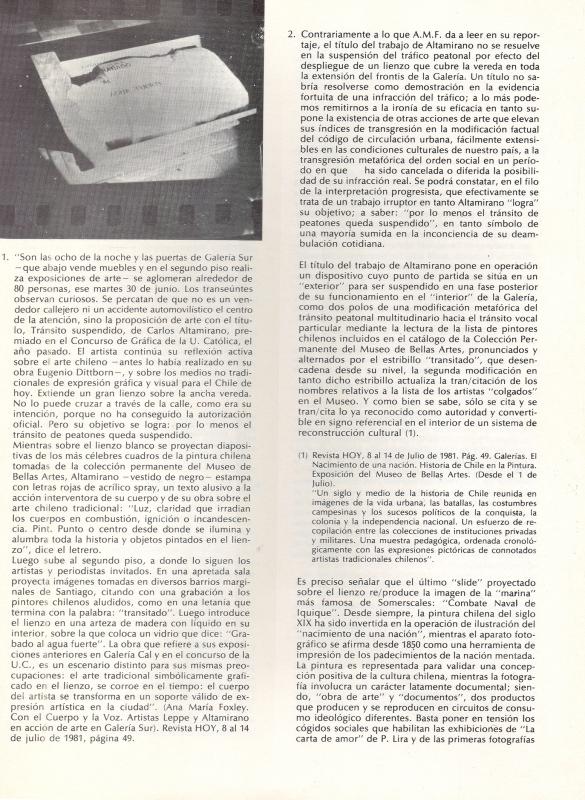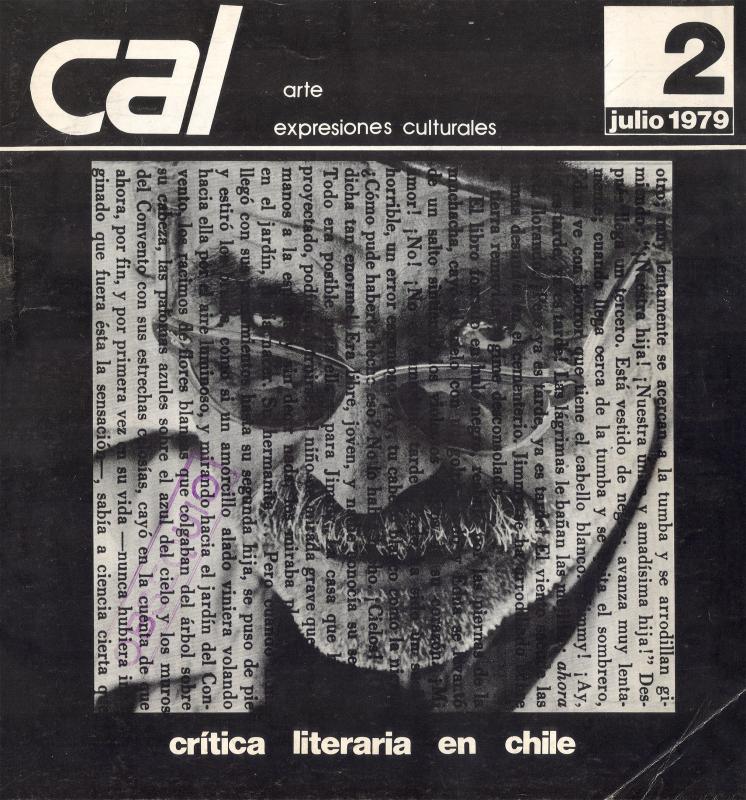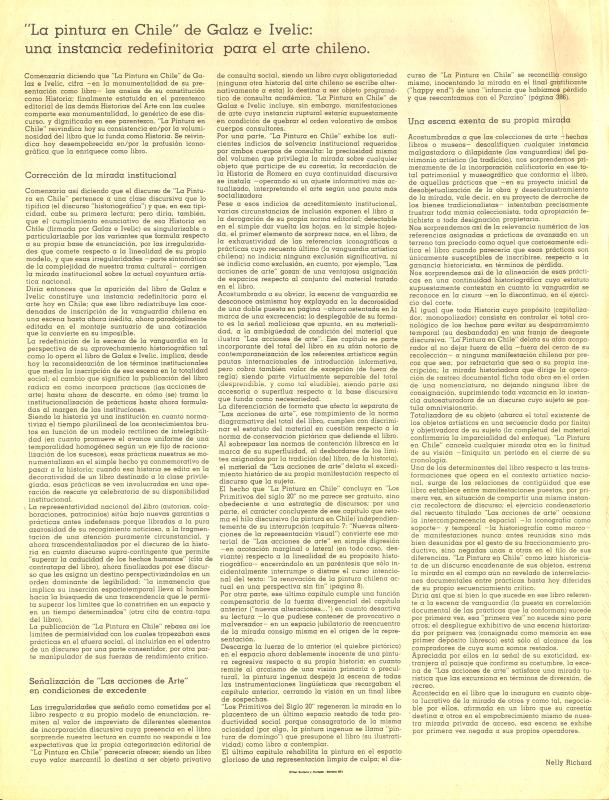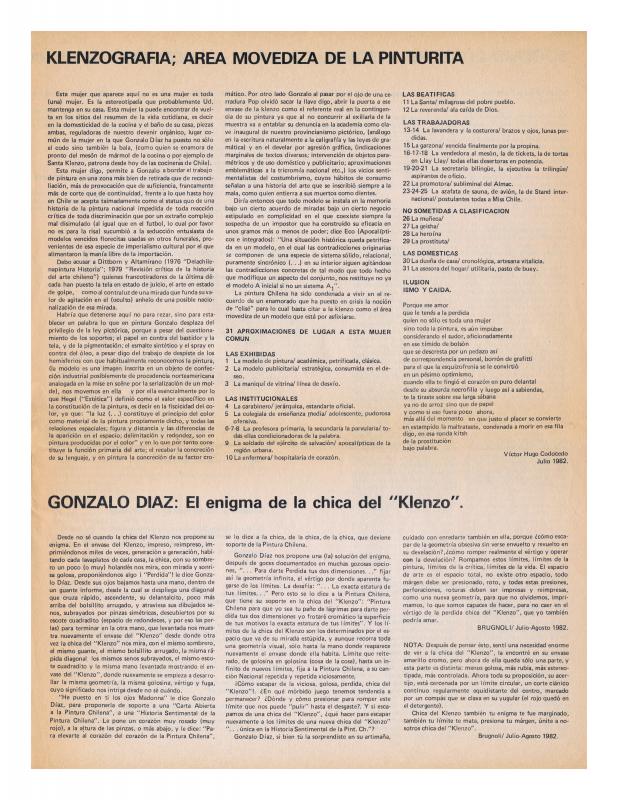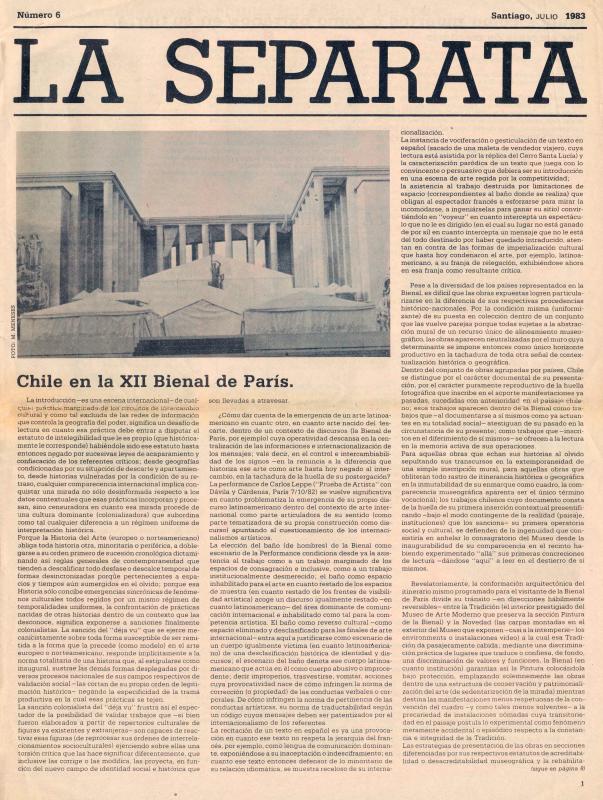Tránsito suspendido was an art action staged by Carlos Altamirano (b. 1954) in 1981, in the Galería Sur and on the sidewalk outside the gallery’s premises in Santiago, Chile. It was published in a catalogue included essays by theorist and cultural critic Nelly Richard (b. 1948) and art critic Justo Pastor Mellado (b. 1949). Neither text has a title, and each is laid out in a different style, even though they are part of the same document. [See Mellado’s text in the ICAA Digital Archive (doc. no. 731739).]
In Richard’s opinion, Altamirano’s action was important because of its critical approach to the history of Chilean painting [see “Return to the Pleasurable” (doc. no. 743686">743686)]. She also maintained an emotional and artistic bond with both Altamirano and Carlos Leppe (1952–2015). In the late 1970s, the three of them worked closely together at the Galería Cromo, where they discussed the art scene and maintained a critical dialogue with the artists Catalina Parra (b. 1940) and Eugenio Dittborn (b. 1943), and poet and theorist Ronald Kay (1941–2017), who were members of the V.I.S.U.A.L. group. They also jointly published CAL magazine (1979) [see (doc. no. 730164)] and La Separata (1981–83). [See also the following articles that appeared in that publication: (doc. no. 731869), (doc. no. 731548), (doc. no. 731874), and (doc. no. 734895).]
Altamirano’s art action is considered an extension of the critical revision of Chilean painting’s history that was begun in 1976 by Eugenio Dittborn (b. 1943) in Delachilenapintura, historia. [See “Return to the Pleasurable” (doc. no. 743686">743686).] The process involved in staging this work was complicated. Altamirano began outside the gallery, blocking foot traffic on the sidewalk with a large piece of canvas upon which he projected slides of paintings in the Museo Nacional de Bellas Artes de Chile’s collection. He spray-painted the following words on the canvas: “Light, clarity radiated by burning, ignited, or incandescent bodies. Pint [sic]. Point or center from which all the history and the objects painted on the canvas are lit and illuminated.” The action continued inside the gallery, where images from an earlier action, Versión residual de la historia de la pintura chilena (1980), were projected. Altamirano used a canvas covered with printed reproductions of paintings in Chilean art history, and photographed himself with it in various places on the outskirts of Santiago. An audio track mentioned the names of the MNBA painters referred to earlier and the word “transitado” (traveled). He placed the canvas in a trough filled with water, which he covered with a sheet of glass inscribed with the words: “Etched print.” After Tránsito suspendido, Altamirano retired from the art scene. He describes his later exhibitions as “relapses” (including Pintor como un estúpido, in 1985, at Galería Bucci, and Pintor de Domingo at the Museo Nacional de Bellas Artes, in 1991). He exhibited nothing for twelve years, then returned to the MNBA in 2019 with the exhibition O si no, a retrospective that lacked temporal organizing documentation. Despite its sporadic nature, Altamirano’s body of work is an important part of the Chilean art scene.

